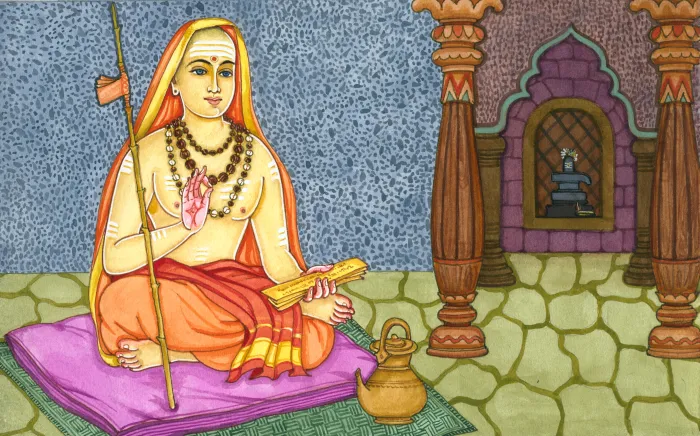Adi Shankaracharya Panchikarana Book
Panchikarana

Panchīkaraṇa is a Sanskrit term that refers to the process of the fivefold combination or quintuplication of the five subtle elements (tanmātras) into gross elements (sthūla bhūtas), forming the material universe as explained in Vedānta philosophy. According to ancient Indian cosmology, the universe is made up of five basic elements: ākāśa (space), vāyu (air), agni (fire), āpas (water), and pṛthivī (earth). Initially, these exist in their subtle forms, which are not perceivable by the senses. The process of Panchīkaraṇa explains how these subtle elements combine to become the gross, tangible elements we experience in the physical world. In Vedānta, it is said that each subtle element is first divided into two equal halves. One half remains intact, and the other half is further divided into four equal parts. Then, the intact half of one element is combined with one-eighth of each of the other four elements. For example, gross earth (pṛthivī) consists of half of subtle earth, and one-eighth each of subtle water, fire, air, and space. This same process is applied to each of the five elements. As a result, every gross element contains all five subtle elements, though in different proportions. This quintuplication process makes the gross world more stable, interconnected, and sensible to human perception. For instance, earth has solidity (earth), liquidity (water), heat (fire), movement (air), and sound (space). Through this model, Panchīkaraṇa helps explain how the physical world functions with various qualities. The concept is elaborated in texts like Vedānta Sāra by Sadananda and Panchīkaraṇa attributed to Adi Shankaracharya, where it is used to help spiritual seekers understand the structure of the physical world and how it emerges from subtle energy.
In the context of spiritual practice, Panchīkaraṇa is not merely a metaphysical or cosmological explanation—it serves a deeper purpose. It helps the aspirant distinguish between the Self (Ātman) and the non-Self (Anātman) by showing how the body and the material world are formed through the combination of inert elements, while the Self remains pure consciousness, untouched by this process. In this way, Panchīkaraṇa supports the Vedantic teaching that the world is Mithyā (relatively real or illusory) and that liberation (moksha) comes through knowledge of the unchanging Self. By understanding how the physical world is formed through Panchīkaraṇa, the seeker can cultivate detachment and focus inward to realize the true nature of the Self, which is beyond all physical and mental constructs. This understanding also plays a role in meditative practices and contemplation, as the aspirant moves beyond identification with the body and mind, recognizing them as temporary formations of the five elements. In conclusion, Panchīkaraṇa is a vital concept in Vedānta that explains the transformation of subtle energy into the gross material world. It is both a philosophical and practical tool for understanding the nature of creation and for advancing on the path to self-realization.





















































